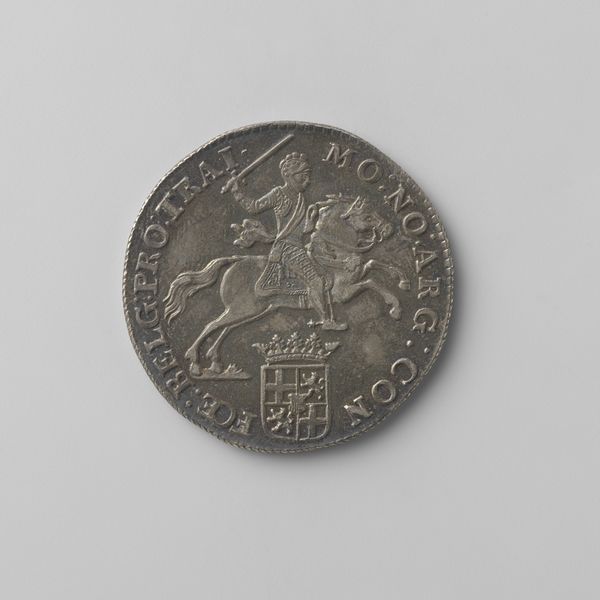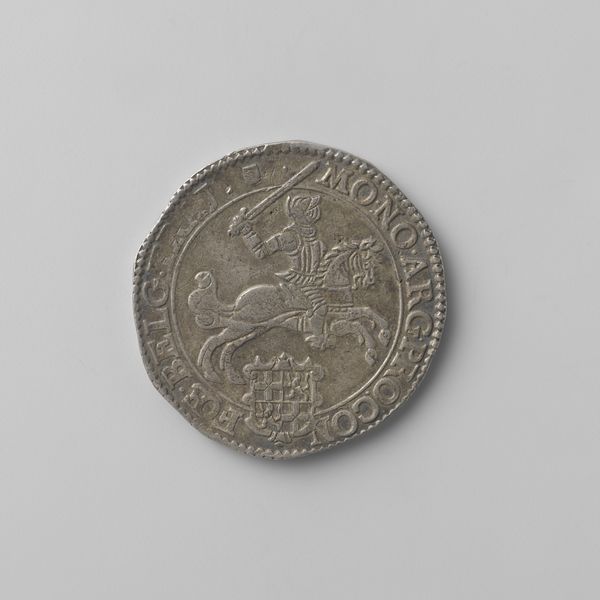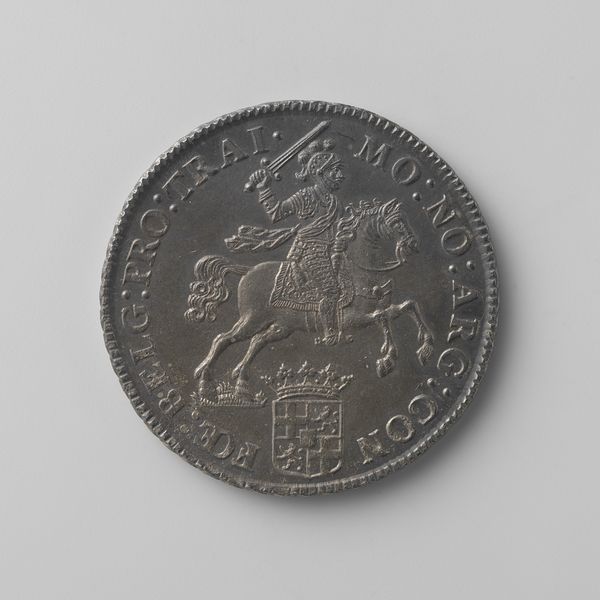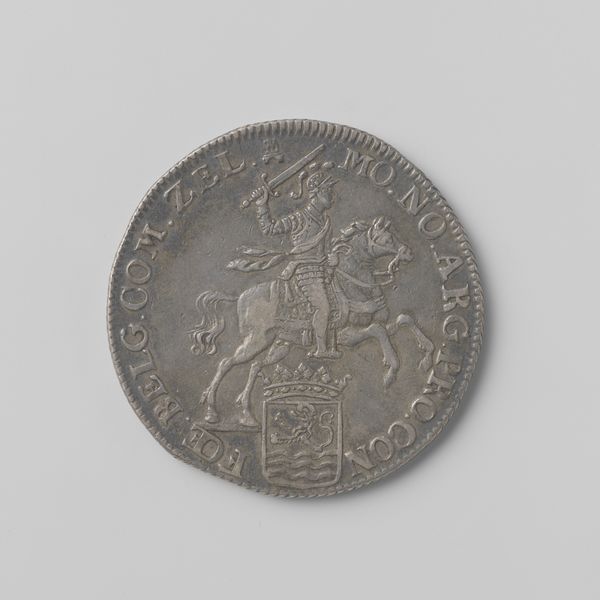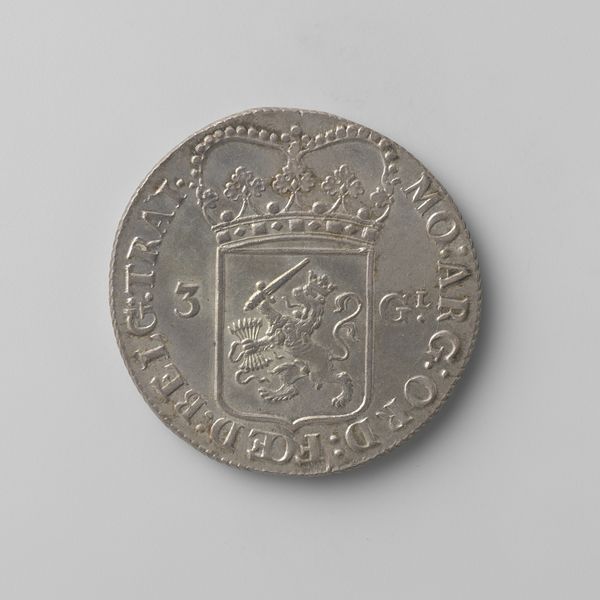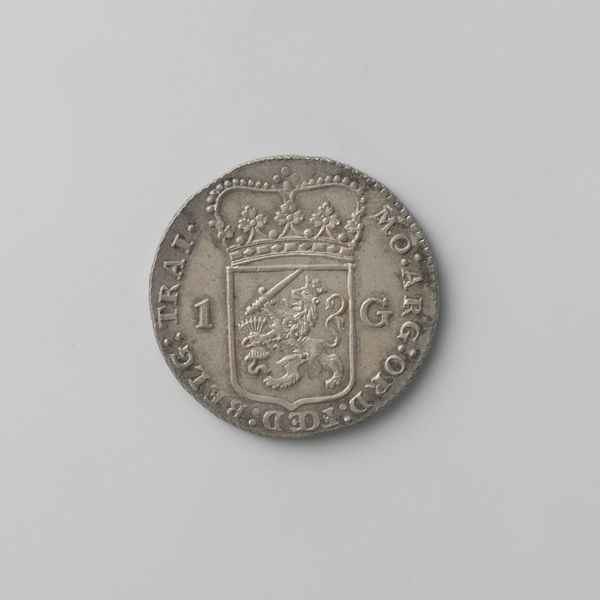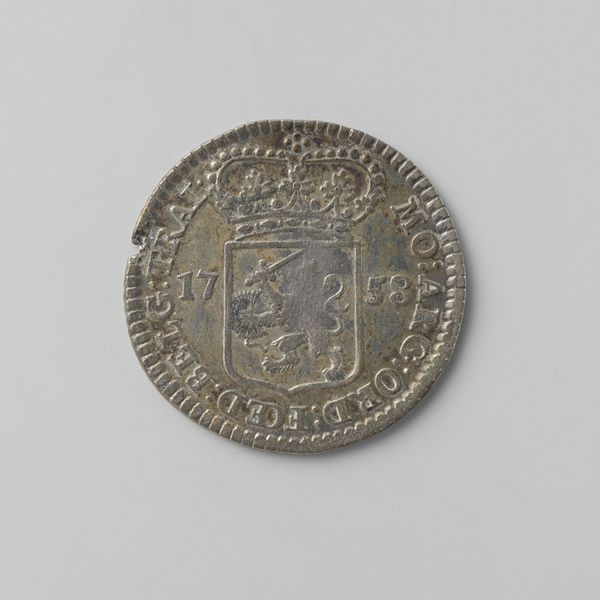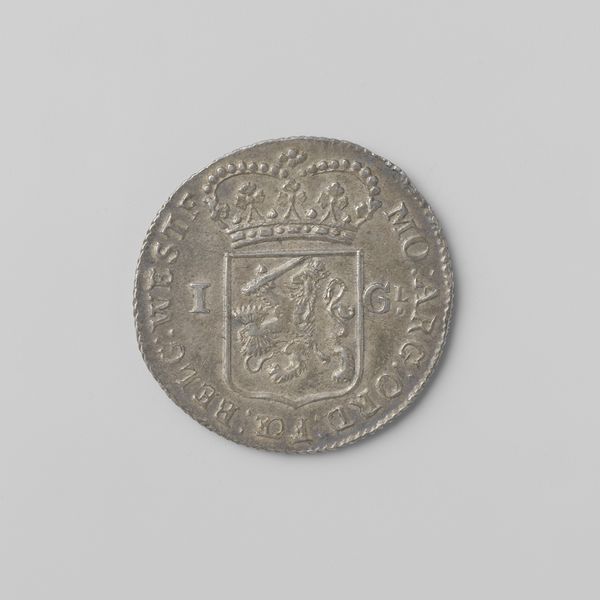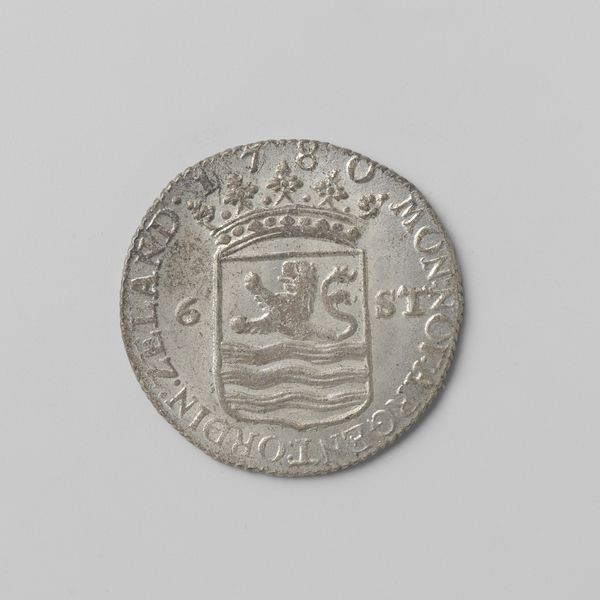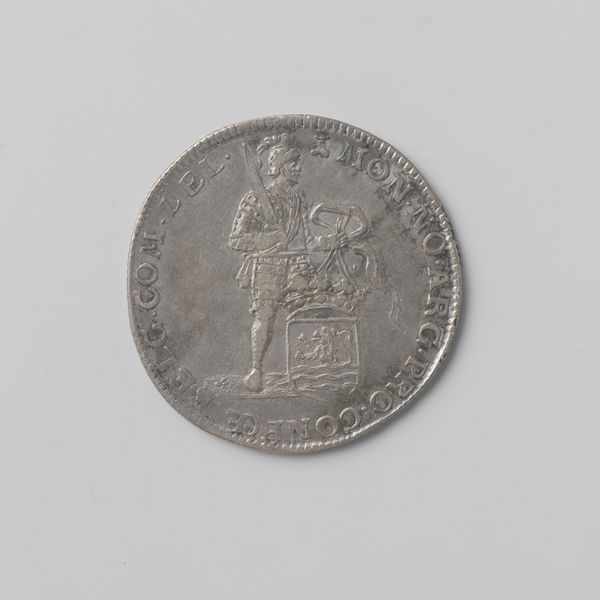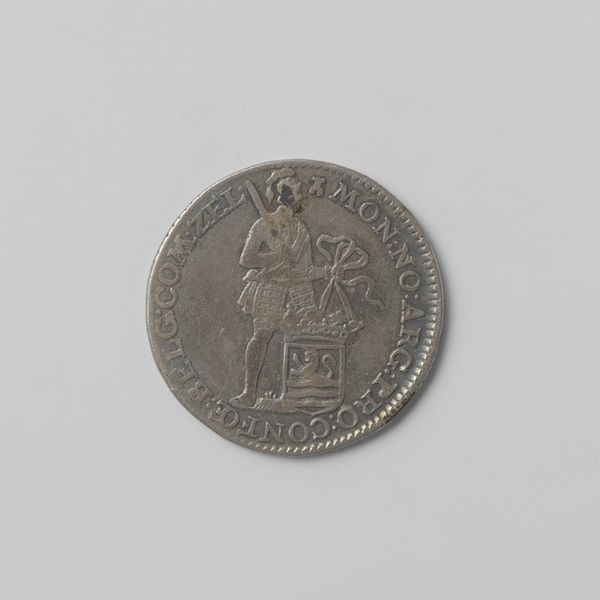
silver, metal
#
portrait
#
silver
#
metal
#
landscape
#
geometric
#
ancient-mediterranean
#
islamic-art
#
realism
Dimensions: diameter 3.6 cm, weight 16.31 gr
Copyright: Rijks Museum: Open Domain
This Utrechtse halve silveren rijder was produced in 1786 in the province of Utrecht. Minted from silver, the coin’s form and markings were achieved through striking, a method of imprinting a design by hammering or pressing a die onto a metal blank. Silver’s inherent qualities of malleability and durability made it an ideal material for currency, allowing for detailed impressions and long-lasting use. The images on the coin – a knight on horseback, a heraldic shield – evoke power, stability, and regional identity, visually reinforcing the coin’s value as a medium of exchange. The production of this coin involved various skilled labourers: the die engraver who created the original design, the mint workers who prepared the silver and operated the striking machinery, and the officials who oversaw the process. Each coin embodies a network of social relations and economic activities. By considering the material, making, and context of this coin, we can appreciate its significance as more than just currency; it’s a material artifact embedded with cultural and historical meaning.
Comments
No comments
Be the first to comment and join the conversation on the ultimate creative platform.

